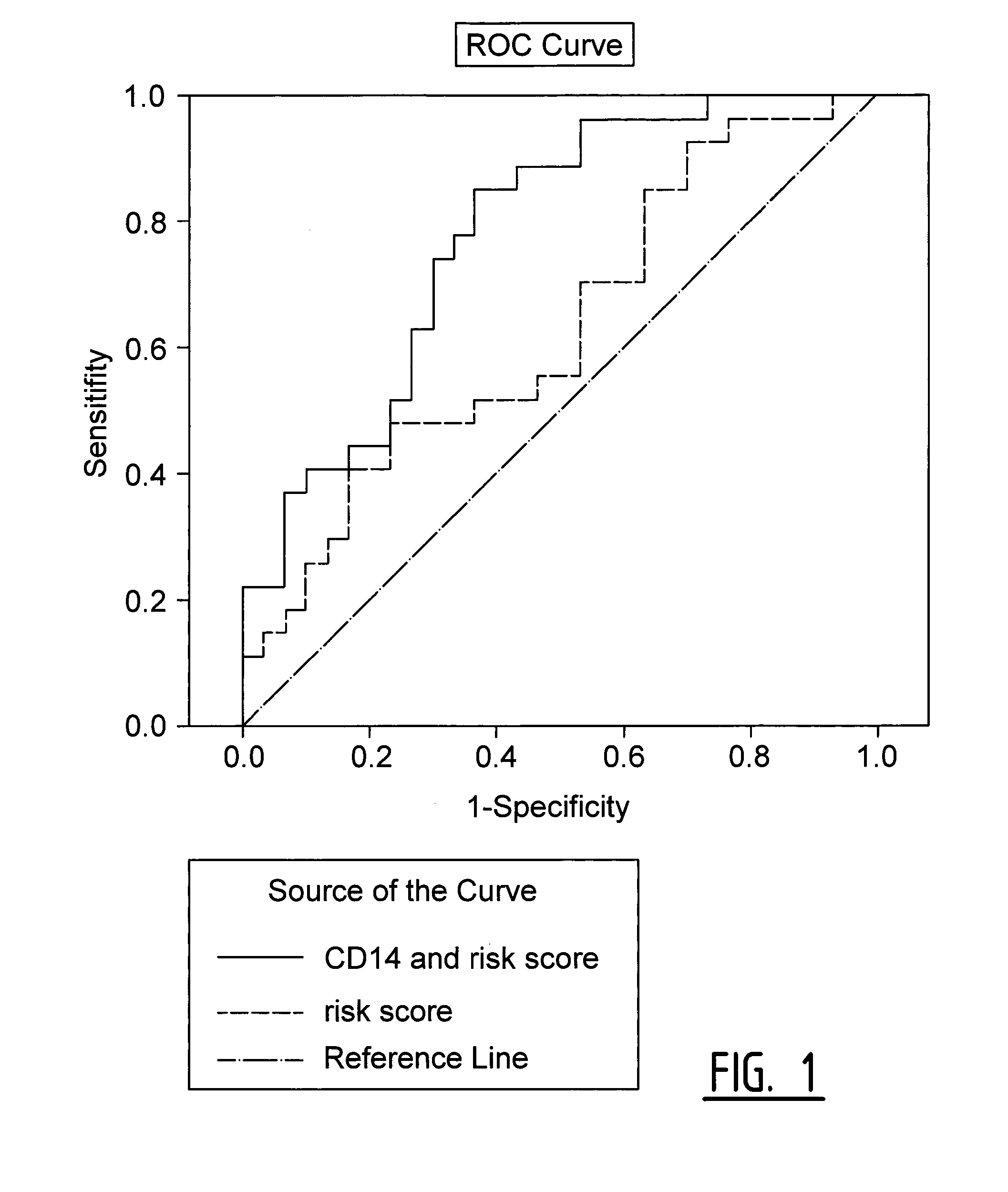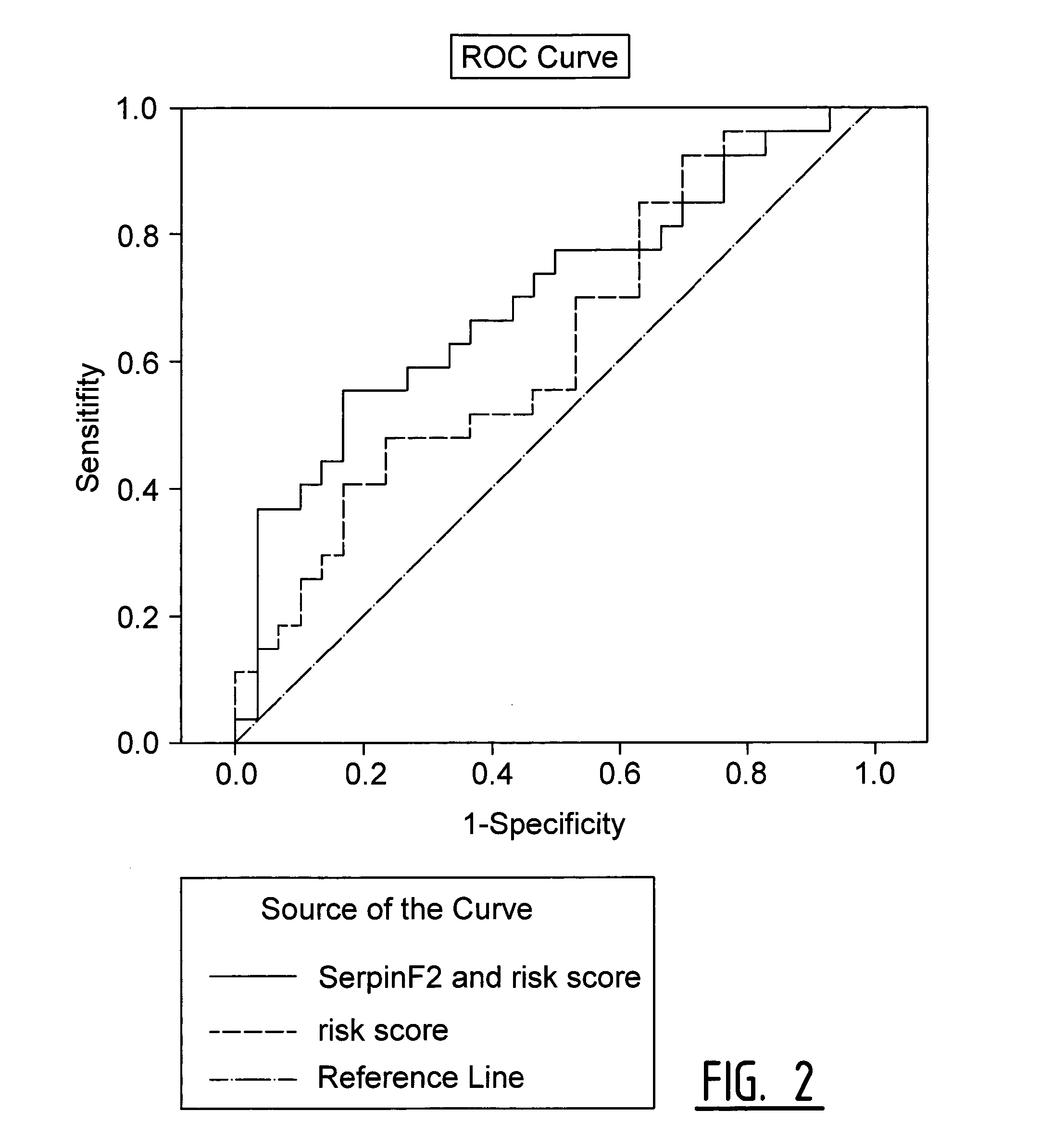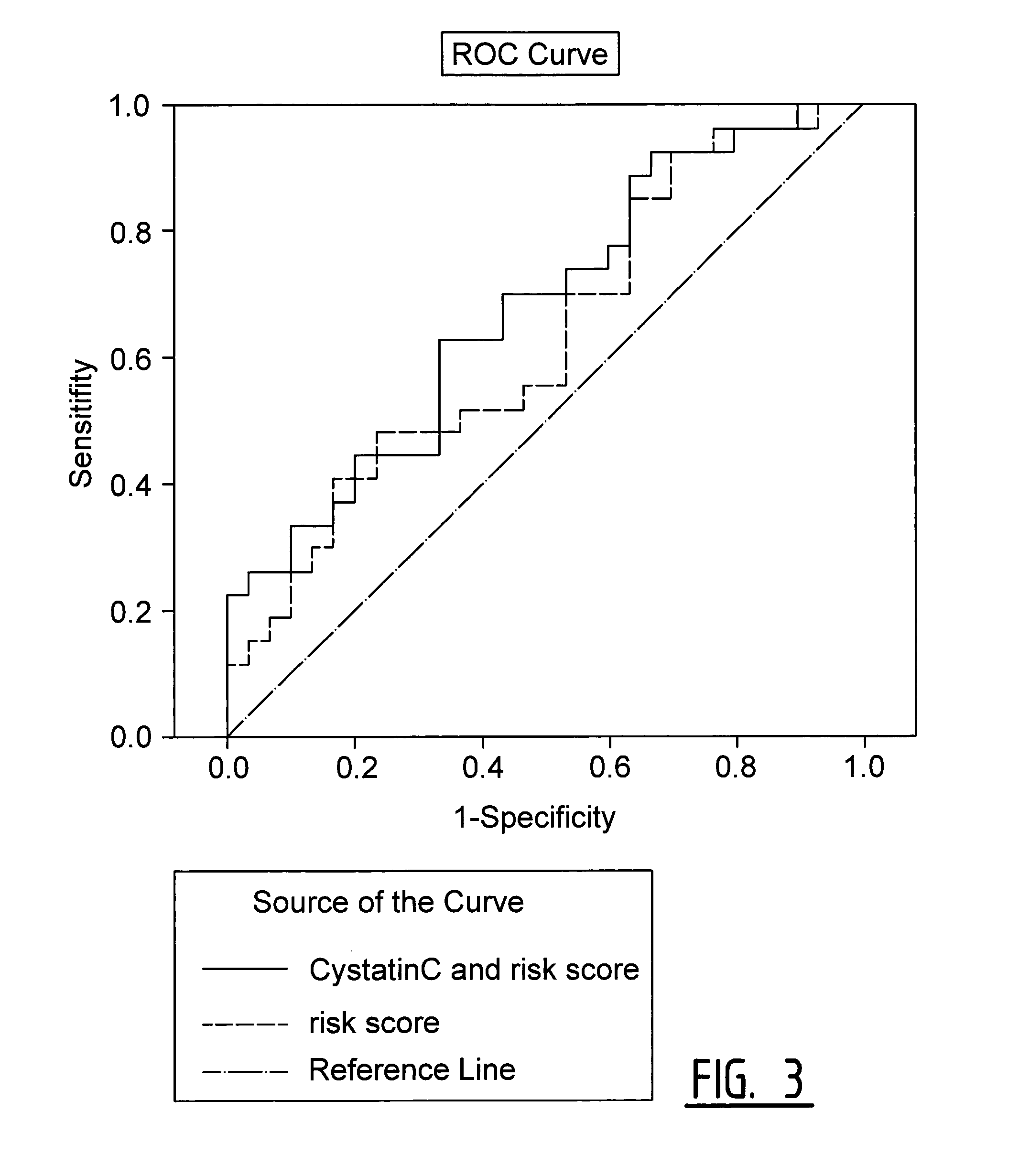Exosomal Biomarkers for Cardiovasular Events
- Summary
- Abstract
- Description
- Claims
- Application Information
AI Technical Summary
Benefits of technology
Problems solved by technology
Method used
Image
Examples
example 1
Quantitative Proteomics on Human Plasma Exosomes with Follow-Up
Study Population and Design
[0072]The Athero-Express is a longitudinal vascular biobank study, which includes biomaterials from patients undergoing carotid and femoral end-arterectomy in two Dutch hospitals (UMC Utrecht and St. Antonius Hospital Nieuwegein). About 2000 patients have been included thus far. Plasma and tissue samples were obtained from all patients before (blood) or during end-arterectomy.
[0073]All patients underwent clinical follow-up 1 year after surgical intervention and filled in postal questionnaires 1, 2 and 3 years after the operation. When patients did not respond to the questionnaire, the general practitioner was contacted by phone. Adjudication of the outcome events was done by an independent outcome event committee that was blinded to laboratory results. Two members of the committee independently assessed all endpoints. In case of disagreement, a third opinion was obtained.
The Exosomal Proteome
[0...
example 2
Verification of the Selected Proteins in a Proof of Concept Study in Blood Samples of Individual Athero-Express Patients
Study Objective
[0101]The objective of this study was to identify in blood samples of individual patients which of those 17 biomarkers were differentially expressed between patients suffering from a secondary coronary event and healthy controls.
Study Design
[0102]Patients in this study underwent surgery of the carotid arteries because of a primary cerebral-vascular event i.e. a stroke or Transient Ischemic Attack (TIA) and were followed-up for three years. The 17 markers were measured in blood samples of patients who suffered from a secondary coronary event (29 samples) and age and sex matched controls (30 samples). The secondary coronary events were defined as myocardial infarction (fatal and non-fatal), cardiovascular death, sudden death, coronary angioplasty, and coronary artery bypass graft (CABG).
Materials and Methods
[0103]Exosomes were isolated from the plasma ...
example 3
Measurement of Biomarkers in Serum Samples without Exosome Isolation
Study Objectives
[0111]The objective of the present example is to evaluate whether a favourable biomarker profile can rule out the chance of a cardiac event in the following years. For this the QICS study (Quick identification of acute chest pain patients study described in BMC Cardiovasc Disord. (2009) 9:24) was used.
[0112]In a cohort of carotid end-arterectomy patients (Athero-Express), exosome bound biomarkers predictive for secondary cardiovascular events were identified (Example 1 and 2). To assess if the predictive power for secondary cardiovascular events of Cystatin C, CD14 and Serpin F2 could be reproduced, serum of 240 patients of the QICS cohort was used to measure the expression of these three exosome-based biomarkers in serum samples with and without isolating the specific exosome fraction of the serum.
Results
[0113]Measurement of Exosome-Based Markers in Serum Samples with Exosome Isolation
[0114]Cystatin...
PUM
 Login to View More
Login to View More Abstract
Description
Claims
Application Information
 Login to View More
Login to View More - R&D
- Intellectual Property
- Life Sciences
- Materials
- Tech Scout
- Unparalleled Data Quality
- Higher Quality Content
- 60% Fewer Hallucinations
Browse by: Latest US Patents, China's latest patents, Technical Efficacy Thesaurus, Application Domain, Technology Topic, Popular Technical Reports.
© 2025 PatSnap. All rights reserved.Legal|Privacy policy|Modern Slavery Act Transparency Statement|Sitemap|About US| Contact US: help@patsnap.com



